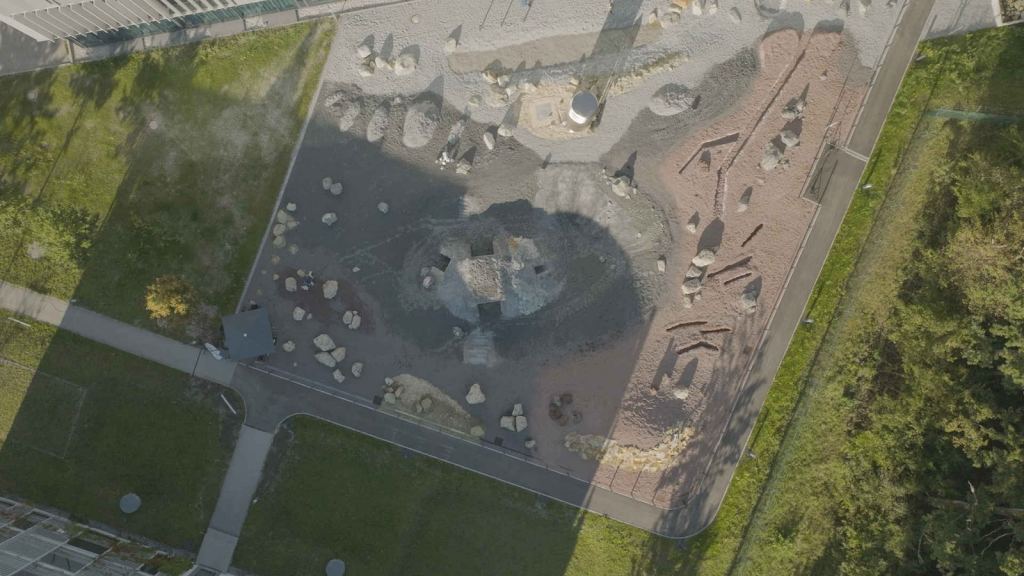In-situ testing for space equipment is complex when it has to be developed on Earth, which is the case for literally all of it, at least for now. Typically, engineers and scientists developing the next Lunar or Martian robotic explorer would seek out exotic destinations that, while they look like they fit on another planet, were just more exotic parts of ours. The robotics team at DLR, Germany’s space agency, decided they could do better. So they built a 1500 sq meter test bed for their upcoming Martian and Lunar exploration bots.
The test bed, which sits in the town of Oberpfaffenhofen outside DLR’s Robotics and Mechatronic Center, contains plenty of simulants for both the lunar and Martian surfaces. It is also connected via a trail to the “Test Site for Planetary Rovers,” an already existing system run by the DLR’s Institute of System Dynamics and Control for a similar purpose.
Some of the simulant materials included at the site include basalt, lava rocks, and suevite, a type of melted rock commonly found in impact craters. The terrain consists of all the classes you would expect to encounter on other worlds. That includes a tunnel, some gullies, sand dunes, and hills everywhere. There are also large boulders, mounds, and other obstacles that rovers and robots of different locomotion types must pick their way through.

Credit – DLR
Those navigational strategies are the most important for the robots being tested here. Integration across multiple robotic platforms is one of the critical goals of the test setup. How those robots coordinate their efforts of extracting samples and getting from one place to another is exactly why the test site was set up in the first place.
Some of that testing will involve dynamically created maps of the space. To help facilitate that, the test bed includes an optical tracking system that provides standard measurements of terrain features to compare the dynamic ones developed by the rovers themselves.
Its first few missions include the IDEFIX rover, built with the French space agency CNES, which will be sent to Phobos as part of the MMX mission from Japan next year. While the test bed wasn’t explicitly designed with Phobos in mind, it is still similar enough to be helpful.
The test bed has some obvious drawbacks – it is still relatively limited in size, though 1500 sq meters is nothing to sneeze at. Maybe more importantly, it isn’t vacuum sealed, so there’s no approximation of the atmosphere on these heavenly bodies. Nor is there a gravity simulation, so one of the main challenges in operating in a low-gravity environment isn’t reflected well here. And finally, it is still protected by the ozone, so there isn’t as much radiation as there would be on the surface of the Moon or Mars.
After all, that’s not what the test bed was designed for. There are plenty of better ways to test the radiation hardness of components than leaving them outside in the sun for long enough. Giving robots a space to roll over and around rocks and dirt like that located on Mars and the Moon is the test bed’s strong suit, and it is sure to provide that service to the DLR and its partners for years to come.
Learn More:
DLR – Moon and Mars test site for robotic missions
UT – Engineers Design a Robot That Can Stick To, Crawl Along, and Sail Around Rubble Pile Asteroids
UT – NASA Tests a Robotic Snake That Could Explore Other Worlds
UT – A Robot With Expandable Appendages Could Explore Martian Caves And Cliffs
Lead Image:
Picture of the 1500 sq meter test area.
Credit – DLR

